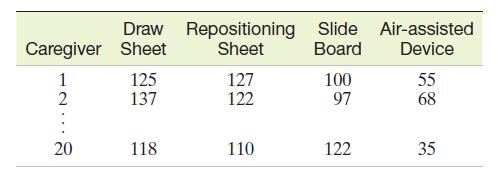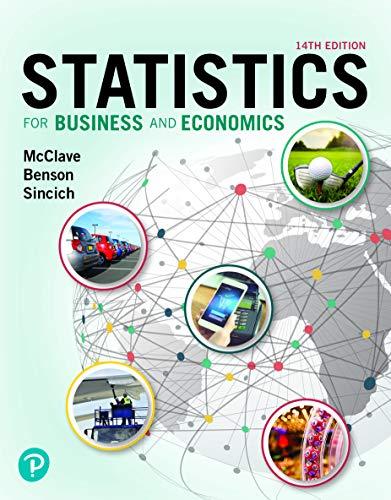Professional caregivers suffer from a high prevalence of muscle stress when transferring patients. Are commercially available friction-reducing
Question:
Professional caregivers suffer from a high prevalence of muscle stress when transferring patients. Are commercially available friction-reducing patient-transfer devices effective in reducing stress? Researchers attempted to answer this question and published the results in Human Factors (November 2019). Four different devices were tested in a lateral transfer task (pulling a patient between two hospital stretchers): (1) draw sheet, (2) friction-reducing repositioning sheet, (3) slide board, and (4) air-assisted device. Each in a sample of 20 professional caregivers performed the task using each of the four devices in random order. One of the variables recorded during each task was hand pull force (measured in Newtons). A layout of the design is shown below. The researchers compared the hand pull force means of the four patient-transfer devices using an ANOVA.
a. Identify the type of experiment design employed.
b. What are the treatments for the experiment?
c. The ANOVA F-test for comparing treatment means resulted in a p-value less than .001. Interpret this result practically.
d. The sample mean hand pull force for each of the four devices are displayed in the accompanying table. The letters associated with the means resulted from applying Tukey’s multiple-comparisons procedure. Means with the same letter are not significantly different using an experiment-wise error rate of .05. Interpret the results practically.
Step by Step Answer:

Statistics For Business And Economics
ISBN: 9780136855354
14th Edition
Authors: James T. McClave, P. George Benson, Terry T Sincich





